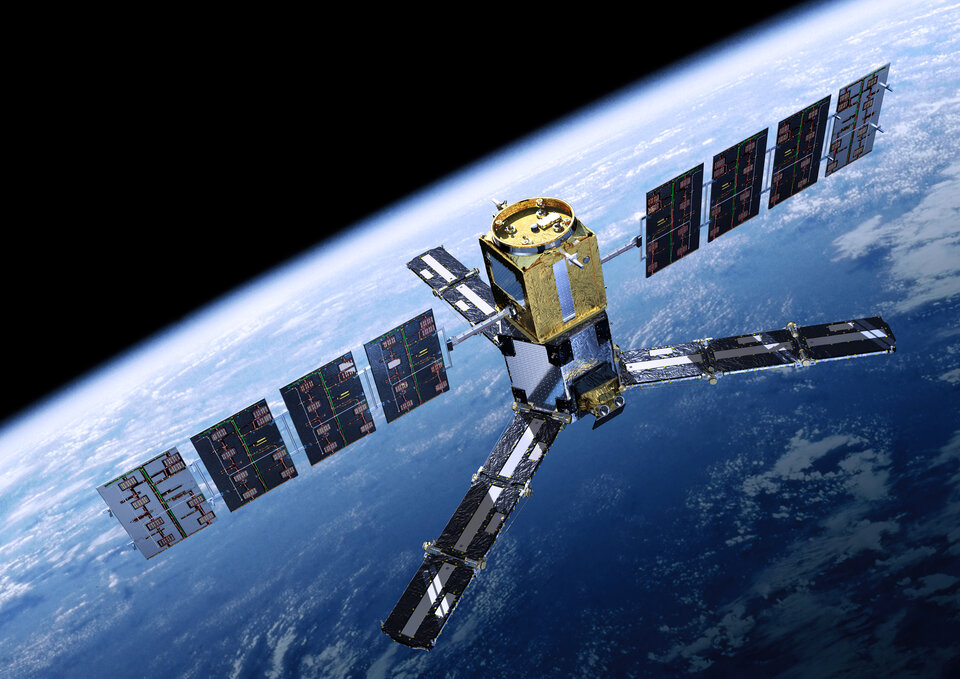SMOS gets help from Tibet
Ground measurements are essential for making sure that satellites deliver accurate information about our changing world. Although the Tibetan Plateau may not seem the obvious place to take such readings, this remote location is being used to check on ESA’s SMOS satellite.
SMOS uses an innovative technique of capturing images of ‘brightness temperature’. Corresponding to radiation emitted from Earth’s surface, these images are used to produce maps of soil moisture and ocean salinity – two important variables in the water cycle.
Even before the SMOS satellite was launched in 2009, field experiments formed an important part of its development. Since then, continual efforts have been made to ensure its data are fit for purpose.
For this exercise to be as comprehensive as possible, in situ measurements have to be taken from all over the world. For example, to address the soil moisture part of the mission, measurements have to be taken from places that have different types of soil and vegetation cover.
To provide comparable measurements from the ground, Gamma in Switzerland built a number of ‘Elbara’ L-band radiometers, two of which were recently placed on the Tibetan Plateau and in Poland.

While SMOS continues to deliver key information on soil moisture and ocean salinity to advance our understanding of the planet, it is becoming increasingly important for ‘real world’ applications such as forecasting weather and crop yields.
Understanding the Tibetan Plateau’s water cycle is extremely important to manage Asia’s water resources because major rivers such as the Ganges, Brahmaputra, Mekong, Yangtze and the Yellow River are all fed from the plateau.
The plateau also plays a critical role in the onset, intensity and duration of the East Asian monsoon as strong surface heating and cooling affects the development of weather systems. It is also known that high-altitude ecosystems are vulnerable to climate change.
Thanks to collaboration with the University of Twente in the Netherlands and the Cold and Arid Regions Environmental and Engineering Research Institute of the Chinese Academy of Sciences, the micrometeorological station near Maqu is now home to an Elbara.
Prof. Bob Su from the university’s Faculty of Geo-Information Science and Earth Observation said, “We know that the soil moisture and surface temperature trends on the Tibetan Plateau change with elevation and depend on the season.
“However, we can only hypothesise about whether this is also connected soil–water freezing and thawing. The Elbara radiometer is the ideal tool to observe the freeze–thaw cycle and underlying processes.”

With the third instrument now providing measurements in Tibet, a fourth has also been placed in Poland to measure a wetland site.
ESA’s SMOS campaign coordinator, Tânia Casal, said, “Comparing SMOS brightness temperatures with similar measurements is certainly one key element in the quality control of our observations.
“These ground-based Elbara measurements allow us to better understand complex processes and their influence on the SMOS signal in a well-controlled environment on the ground.”















 Germany
Germany
 Austria
Austria
 Belgium
Belgium
 Denmark
Denmark
 Spain
Spain
 Estonia
Estonia
 Finland
Finland
 France
France
 Greece
Greece
 Hungary
Hungary
 Ireland
Ireland
 Italy
Italy
 Luxembourg
Luxembourg
 Norway
Norway
 The Netherlands
The Netherlands
 Poland
Poland
 Portugal
Portugal
 Czechia
Czechia
 Romania
Romania
 United Kingdom
United Kingdom
 Slovenia
Slovenia
 Sweden
Sweden
 Switzerland
Switzerland





























